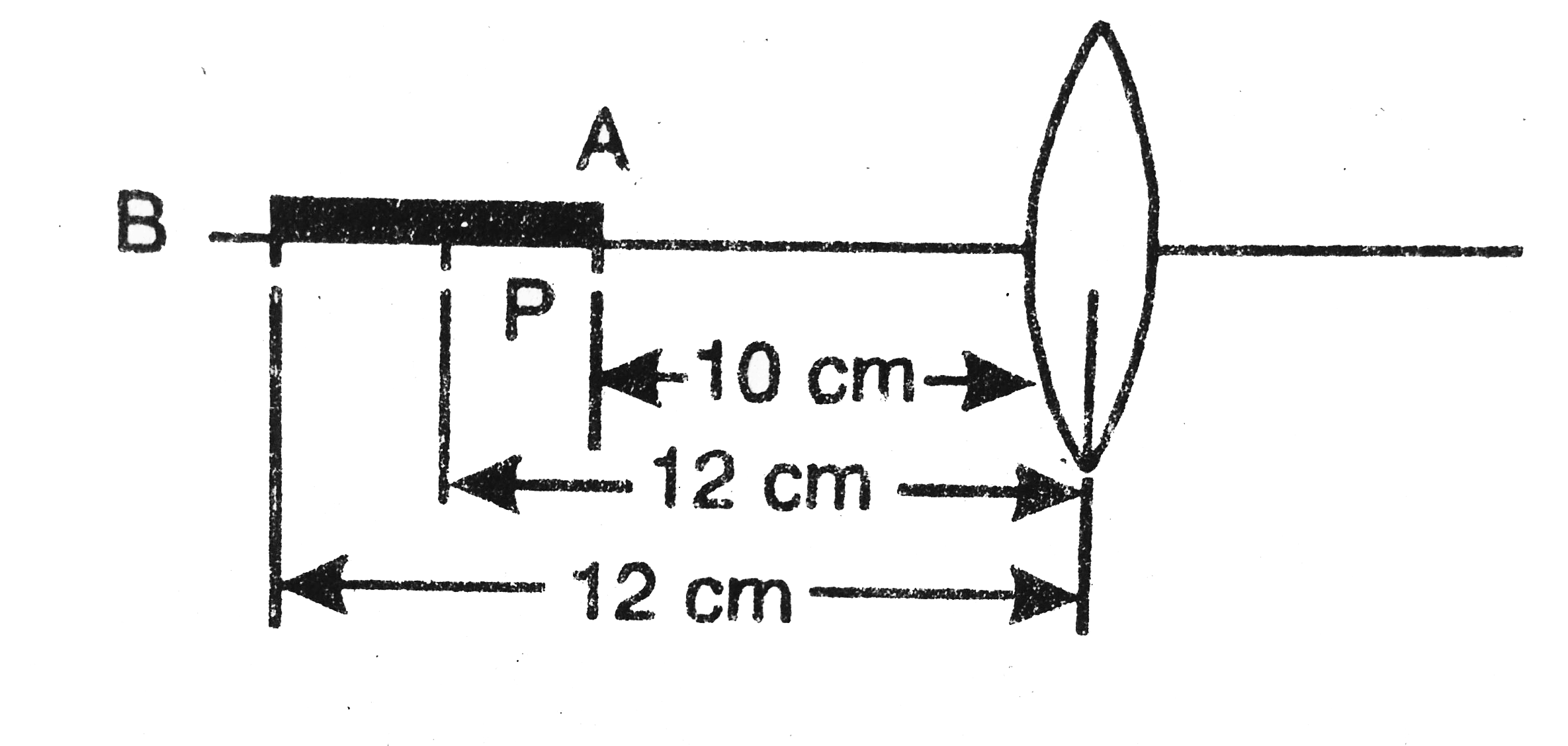A particle executes a simple harmonic motion of amplitude 1.0 cm along the principal axis of a convex lens of focal length 12 cm. The mean position of oscillation is at 20 cm from the lens. Find the amplitude of oscillation of the image of the particle. Solution in Gujrati
The correct Answer is:B, C

When particle at A
1vA=1f+1u
=112−119
→vA12×197
Similarly vB=12×129
Amplitude of image =(v_A-v_B)/2<br>=4.5/2=2.2cm
Topper's Solved these Questions
Similar Questions
If the light moving in a straight line bends by a small but fixed angle it may be a case of
View SolutionThe electric field in a region is given by →E=35E0→i+45E0→j with E0=2.0×103NC−1. Find the flux of this field through a recatngular surface of area 0.2m2 parallel to the y-z plane.
View SolutionFind the range of frequency of light that is visible to an average human being (400nm<λ<700nm)
View SolutionA particle executes a simple harmonic motion of amplitude 1.0 cm along the principal axis of a convex lens of focal length 12 cm. The mean position of oscillation is at 20 cm from the lens. Find the amplitude of oscillation of the image of the particle.
View SolutionA particle is executing simple harmonic motion between exterme positions given by (-1,-2,-3)cm and (1,2,1)cm . Its amplitude of oscillation is
View SolutionA particle executing simple harmonic motion of amplitude 5 cm has maximum speed of 3.14 cm//s . The frequency of its oscillation is
View SolutionA particle executes simple harmonic motion with an amplitude of 4 cm . At the mean position the velocity of the particle is 10 cm/ s . The distance of the particle from the mean position when its speed becomes 5 cm/s is
View SolutionA particle executes simple harmonic motion with an amplitude of 4 cm. At the mean position, the veloocity of the particles is 10 cm // s. The distance of the particles from the mean position when its speed becomes 5 cm // s is
View SolutionA point object is placed 20 cm left of a convex lens of focal length f = 5 cm (see the figure). The lens is made to oscillate with small amplitude A along the horizontal axis. The image of the object will also oscillate along the axis with
View SolutionA particle executes a simple harmonic motion of amplitude 1.0 cm along the principle axis of a convex lens of focal length 12 cm. The mean position of oscillation is at 20 cm from the lens. Find the lens amplitude of oscillation of image of the particle. Does the image also execute simple harmonic motion ?
View SolutionA 1.5 cm tall object is placed perpendicular to the principal axis of a convex lens of focal length 15 cm. Distance of object from the lens is 20 cm. Use lens formula to find the nature, position and size of the image.
View Solutionएक उत्तल लेंस के मुख्य अक्ष पर एक कण 1.0 cm आयाम की सरल आवर्त गति कर रहा हैं । लेंस की फोकस - दूरी 12 cm हैं । कण की गति का मध्य - बिंदु लेंस से 20 cm दूरी पर हैं । प्रतिबिंब की गति का आयाम (दोनों किनारों के बीच की दूरी का आधा ) निकालें ।
View SolutionThe equation of a simple harmonic oscillator with amplitude 5 cm and period 2 sec is if particle is starting from the mean positions is–
View SolutionThe position and velocity of a particle executing simple harmonic motion at t = 0 are given by 3 cm and 8cms−1 respectively . If the angular frequency of the particle is 2rad s−1 , then the amplitude of oscillation (in cm) is
View SolutionA particle executing simple harmonic motion of amplitude 5 cm has maximum speed of 31.4 cm/s. The frequency of its oscillation is…………….
View SolutionA particle executing simple harmonic motion of amplitude 5 cm has maximum speed of 31.4cm/s. The frequency of its oscillation is……….
View Solution
